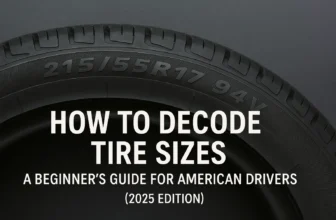With car prices still sitting high in 2025 and interest rates not doing drivers any favors, more Americans are holding on to their vehicles and looking for smarter, wallet-friendly ways to upgrade. The good news? You don’t need a mechanic’s garage or a five-figure budget to breathe new life into your car. From small performance boosts to major improvements in safety and comfort, these upgrades are all legal, practical, and affordable. Here are 10 ways savvy car owners are upgrading their rides without draining their savings.
Plug-and-Play Performance Chips
If you want better throttle response or a modest horsepower boost without popping the hood, performance chips are one of the most effective upgrades available in 2025. These devices plug into your vehicle’s OBD-II port and optimize engine parameters like fuel-air ratio and ignition timing. Many are pre-tuned for specific makes and models, and some even offer multiple driving modes—from economy to sport. Best of all, newer models are built to comply with U.S. emissions laws and won’t void your factory warranty if installed correctly.
- Cost Range: $150–$600
- Popular Brands: Pedal Commander, Jet Performance, Superchips
- Best For: Pickup trucks, daily-driver sedans, and off-road SUVs
- Benefits: Quicker acceleration, better fuel economy, customizable modes
A 10-minute install could make your car feel years newer, all while staying street-legal in all 50 states.
High-Performance Air Filters
One of the easiest DIY upgrades you can make is swapping out your stock air filter for a high-performance alternative. Brands like K&N and aFe offer filters that increase airflow to your engine, improving combustion efficiency and throttle response. These filters are also reusable—just wash, oil, and reinstall every 30,000–50,000 miles. Over time, this saves money and reduces waste, making it an eco-friendly bonus.
- Cost Range: $60–$100 (lifetime use)
- Performance Gains: Slight power bump, 1–2 MPG improvement
- Installation Time: 5–10 minutes
- Best For: Any gasoline vehicle with a standard airbox
It’s a small upgrade with long-term payoff—and ideal for those who want a mild performance edge without touching anything complicated under the hood.
LED and Laser Headlight Conversions
Upgrading your headlights isn’t just about looking modern—it’s about safety. LED and laser headlight conversion kits are brighter, last longer, and consume less power than traditional halogen bulbs. In 2025, most kits are plug-and-play and come with built-in CANBUS resistors to avoid dashboard errors. Plus, DOT-approved options ensure legality on U.S. roads. If you drive often at night or in rural areas, this upgrade delivers immediate results in visibility and driving confidence.
- Cost Range: $80–$250 per pair
- Top Brands: Auxbeam, Sealight, Morimoto, Philips
- Best For: Commuter cars, SUVs, and older models with dull halogens
- Installation: Usually DIY with basic tools
A headlight upgrade makes your car look newer and drastically improves nighttime driving—making it one of the most satisfying mods per dollar spent.
All-Weather Floor Liners & Seat Covers
Interior wear and tear can tank your resale value faster than a few extra miles on the odometer. In 2025, more drivers are investing in custom-fit all-weather floor mats and durable seat covers—not just for protection, but for comfort and style too. Premium mats from brands like WeatherTech and Husky Liners trap dirt, spills, and snow without curling or cracking. Meanwhile, waterproof neoprene or leatherette seat covers give your cabin a clean, factory-fresh look while shielding it from daily damage.
- Cost Range: $100–$300 for full coverage
- Top Picks: WeatherTech DigitalFit, Husky Liners, Coverking seat covers
- Best For: Families, pet owners, commuters, and outdoor adventurers
- Key Benefits: Resale protection, easier cleaning, added style
This simple interior refresh is one of the smartest preventative upgrades—and it pays off big when it’s time to sell or trade in.
Smartphone-Based Dash Cams
As insurance fraud and hit-and-run incidents rise, dash cams have become a must-have in 2025. Many new models connect wirelessly to your smartphone for instant access to footage, GPS data, and even collision alerts. Dual-lens systems that capture both front and rear views are now compact, discreet, and budget-friendly. Some insurers are even offering discounts for vehicles equipped with certified dash cams, making this upgrade both practical and financially rewarding.
- Cost Range: $70–$200
- Popular Models: Viofo A129 Duo, Nextbase 320XR, Garmin Mini 2
- Features to Look For: Loop recording, parking mode, GPS tracking
- Best For: City drivers, rideshare vehicles, and long-haul commuters
Install one in under 30 minutes and you’ve got 24/7 driving proof—no more “he said, she said” after a fender bender.
Upgraded Brake Pads and Rotors
Performance isn’t just about going faster—it’s also about stopping better. In 2025, more drivers are upgrading to ceramic or carbon-fiber-infused brake pads and slotted or drilled rotors. These upgrades offer better heat dissipation, reduced brake fade, and improved stopping distances—especially in high-traffic or downhill driving conditions. Best of all, these parts are often direct replacements for OEM components and don’t require any complex modifications.
- Cost Range: $200–$500 for full front/rear set
- Best Brands: PowerStop, EBC Brakes, StopTech
- Installation: DIY possible for experienced owners; pro install recommended for safety
- Ideal For: Heavier vehicles, hilly terrain, performance cars
If your brakes squeak, feel soft, or don’t inspire confidence—this upgrade not only improves safety, but also adds a premium feel to your daily drive.
Sound Deadening & Cabin Insulation
Tired of road noise, engine hum, or rattling panels? You’re not alone. In 2025, many American drivers are enhancing cabin comfort with DIY sound-deadening kits. Using butyl rubber mats, foam liners, or spray-on insulation, you can dramatically reduce cabin noise—especially on highways or in older vehicles. Applying material to door panels, the trunk, floor, and firewall creates a luxury-car quietness without the luxury-car price tag. It’s a popular mod for anyone who values a calm, refined driving experience.
- Cost Range: $100–$300 depending on coverage area
- Top Brands: Dynamat, Noico, Kilmat
- Best For: Commuters, ride-share drivers, older vehicles, and music lovers
- DIY Difficulty: Moderate – requires removing interior panels
This upgrade won’t make your car faster, but it’ll make it feel far more premium—especially on long drives or daily commutes.
Custom Wheels on Factory Tires
One of the fastest ways to change your car’s entire look is with a set of custom alloy wheels. In 2025, more drivers are skipping oversized rims and choosing tasteful, lightweight wheels that fit their existing tire size. This avoids speedometer issues and ride quality problems while still giving your vehicle a bold, personalized appearance. Brands like Enkei, American Racing, and Fuel Off-Road offer U.S.-focused options with strong build quality and DOT compliance.
- Cost Range: $500–$1,200 for a full set (wheels only)
- Best Fitment Tip: Stick to factory tire size to avoid alignment and ride issues
- Popular Looks: Matte black, gunmetal, or machined silver
- Bonus: Better cooling for brake components on performance models
This mod hits the sweet spot between form and function—turning heads without compromising safety or comfort.
Wireless Apple CarPlay / Android Auto Kits
Many cars from 2010 to 2020 lack built-in wireless smartphone integration, but that doesn’t mean you’re stuck with outdated tech. Retrofit kits are booming in 2025, allowing drivers to add wireless Apple CarPlay or Android Auto with ease. These kits typically include a screen unit, plug-in harness, and USB-C or Bluetooth support—all without messing with your factory wiring. It’s a sleek upgrade that improves navigation, calls, music, and messaging in one shot.
- Cost Range: $200–$600 depending on screen size and vehicle model
- Top Retrofit Brands: Ottocast, Carlinkit, JoyeAuto
- Installation: Varies—some plug-and-play, others need dash removal
- Best For: Commuters, older luxury vehicles, and frequent road trippers
You’ll feel like you upgraded your entire infotainment system—without paying dealership markups or replacing your stereo.
Steering & Suspension Bushing Upgrades
It’s one of the most overlooked upgrades—but also one of the most transformative for handling feel. In 2025, American drivers are finally giving attention to worn-out rubber bushings in their suspension and steering components. Replacing them with polyurethane or performance rubber bushings sharpens cornering response, reduces slop in the steering wheel, and eliminates annoying clunks or vibrations. Especially on vehicles 5–10 years old, this upgrade restores a tight, planted ride feel that rivals newer models.
- Cost Range: $100–$400 for full front/rear kits
- Top Brands: Energy Suspension, Whiteline, SuperPro
- Ideal For: Aging sedans, SUVs with body roll, and any car with vague steering
- DIY Difficulty: Moderate to advanced—some press tools required
If your car feels “floaty” or disconnected from the road, this upgrade brings it back to life—especially when paired with fresh shocks or struts.
Conclusion
Whether you’re driving a 10-year-old Honda or a brand-new pickup, you don’t need to spend thousands to enjoy a better ride. These 10 upgrades show that smart, legal, and impactful car modifications are well within reach for the everyday American driver in 2025. From sharper performance and modern tech to safety and interior comfort, each of these tweaks delivers tangible results without major investment or complexity.
If you’re thinking about your next car upgrade, start with what matters most to your driving experience—comfort, control, safety, or tech—and build from there. Better still, consult with a trusted auto advisor or mechanic before diving into anything major. Smart upgrades are all about balance—and in today’s market, they’re your best way to keep your car feeling new, fun, and truly yours.





